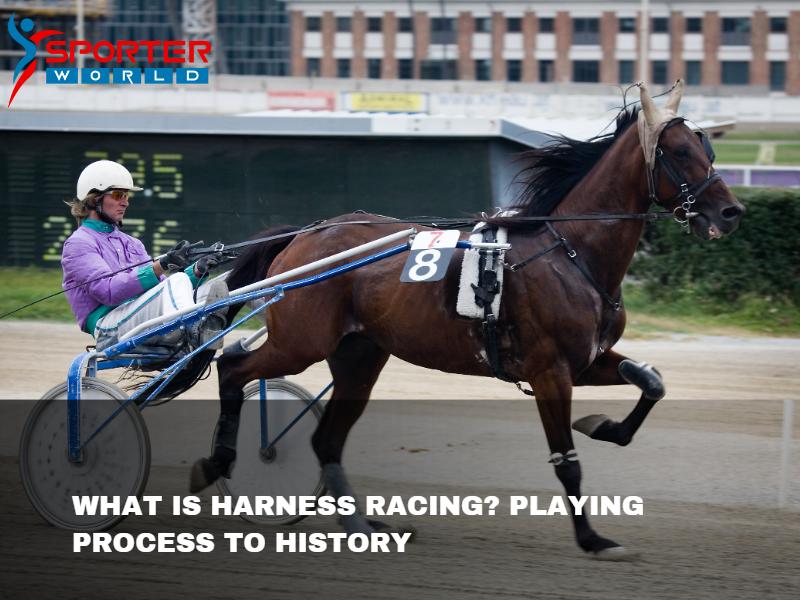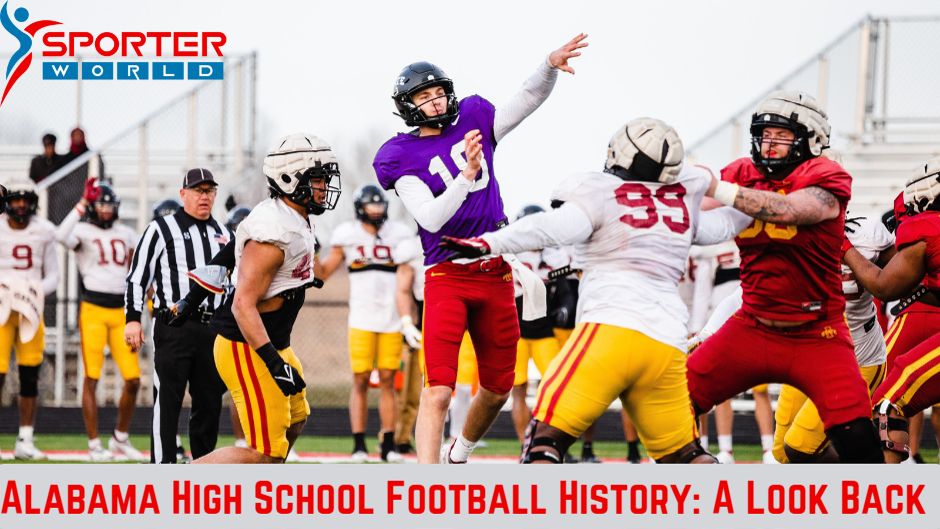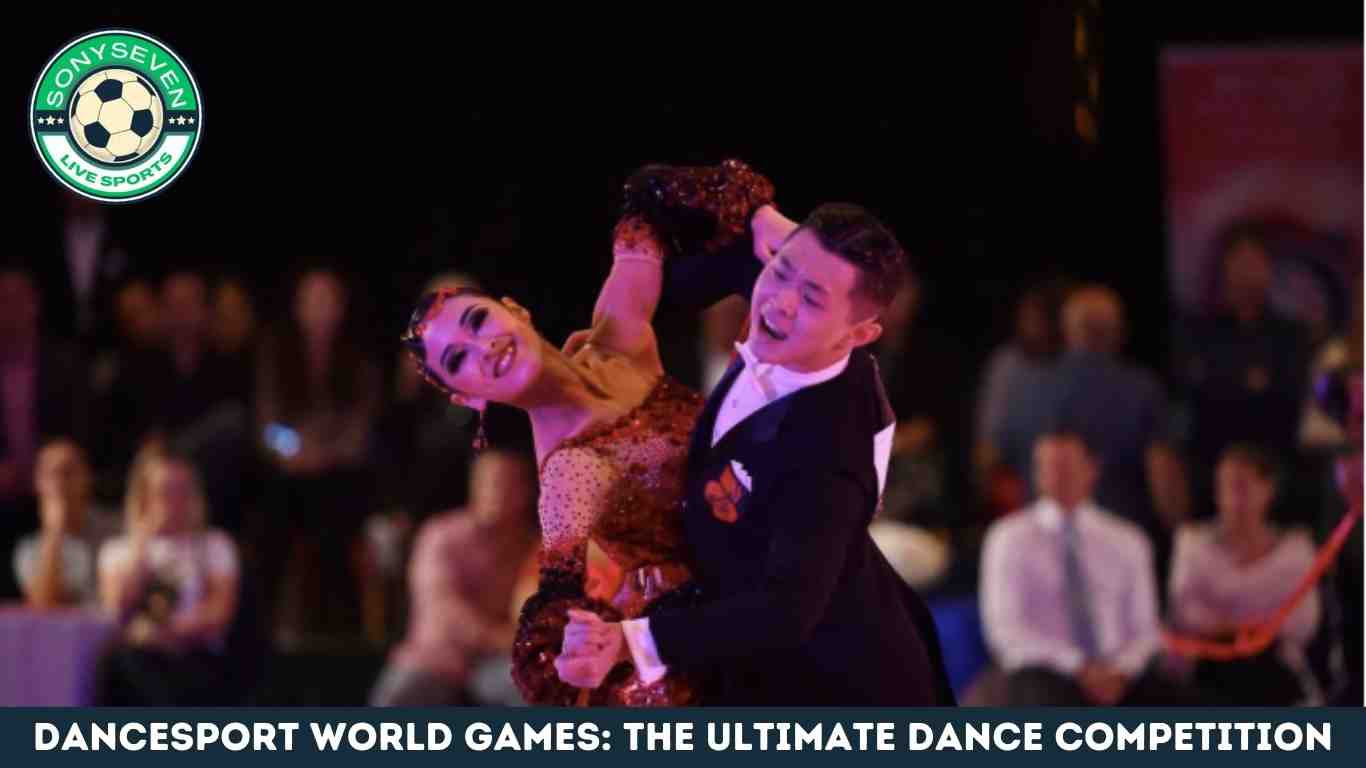Do you like horse racing but find traditional horse races too short and lacking in excitement? Then perhaps you should check out harness racing! This unique form of horse racing takes place on a track but with drivers guiding their horses while riding in a two-wheeled cart known as a sulky. The speed and strategy of harness racing make it a thrilling experience for spectators and participants.
While harness racing may not be as well-known as other forms of horse racing, it has a rich history and a dedicated fanbase. The first recorded harness race took place in the United States in 1780, and since then, the sport has evolved with the development of specialized equipment and standardized rules. Today, harness racing takes place in countries around the world and has even become a popular betting sport.
In this article, we’ll dive into the world of harness racing, exploring the history, rules, equipment, and notable races of the sport. Whether you’re a horse racing enthusiast looking to expand your horizons or a newcomer curious about this exciting form of racing, we’ve got you covered.
What is Harness Racing?
Harness racing is a type of horse racing where horses race at a specific gait known as a “trot” or “pace.” Unlike thoroughbred racing, where horses gallop, harness racing involves pulling a two-wheeled cart called a “sulky” or “race bike” while maintaining a controlled gait.
In harness racing, horses are harnessed to the sulky and driven by a driver, also known as a “reinsman” or “driver.” The driver sits in the sulky and guides the horse using reins. The horses in harness racing are usually Standardbreds, a breed known for their ability to trot or pace at high speeds.
Harness racing events take place on special tracks called “harness tracks.” These tracks are generally smaller than thoroughbred racetracks and have different surfaces made of crushed limestone or synthetic material to accommodate the trotting or pacing gait.
Harness racing competitions can include different types of races, such as:
- Trotting Races: In trotting races, horses move in a diagonal gait where the front and rear legs on opposite sides move forward together.
- Pacing Races: In pacing races, horses move in a lateral gait where the legs on the same side move forward together.
- Handicap Races: Handicap races are designed to level the playing field by assigning different weights or starting positions to horses based on their abilities, aiming to create a more competitive race.
- Stake Races: Stake races are high-profile events with substantial prize money, often featuring the best horses in the sport.
Harness racing is popular in several countries, including the United States, Canada, Australia, New Zealand, and Europe. It has its own set of rules and regulations specific to harness racing, and organizations such as the United States Trotting Association (USTA) and Standardbred Canada govern the sport and oversee the races.
The excitement in harness racing comes from the speed and strategy involved as horses and drivers compete to cross the finish line first.
When Harness Racing Starts?
The earliest trotting match was held in 1554 at a horse fair in Valkenburg, Holland. The Golden Whip, Holland’s most famous trotting event, began soon after in 1777 and ran at Soestdijk. Around this same time, Count Orlov of Russia began to develop a powerful trotting strain at his stud farm, with the Barss stallion serving as the foundation for Russian trotting stock.
England’s Norfolk Trotter became popular around 1750 as a road horse used primarily for transportation. However, its speed caused owners to divert it towards road racing as an entertaining hobby. These early days of horse racing helped lay the groundwork for today’s events across Europe and the United States, producing many iconic horses that have entered craftsmanship and legend alike.
Racing has become a booming pastime and industry over centuries, captivating audiences with fast-paced spectacle and demonstrating remarkable improvements in equine achievement through initiatives such as breeding programs and better nutrition. Furthermore, enthusiasts have experienced the exhilarating highs of picking winners or enjoying a pleasant afternoon outdoors watching a race near home or far from home.
Read More: Who Are The Most Famous California Handball Players?
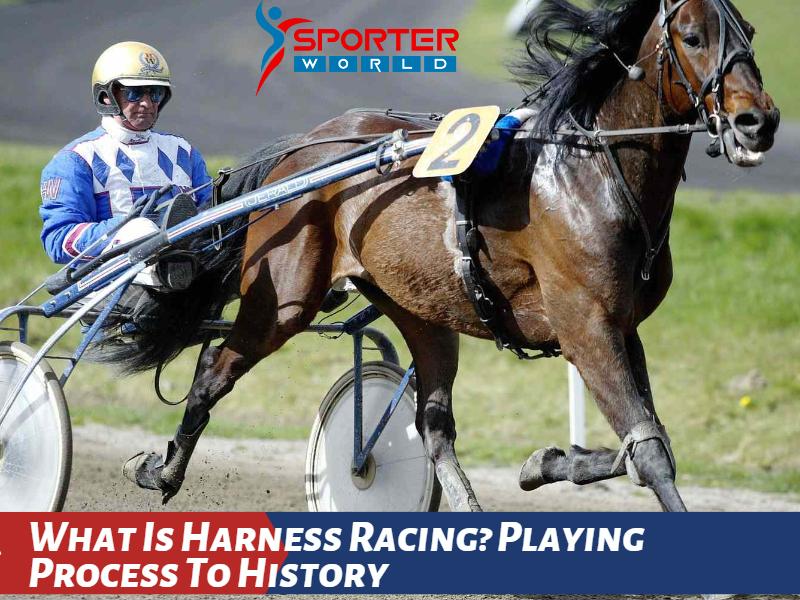
What Are The 2 Styles Of Harness Racing?
The two styles of harness racing are trotting and pacing. These styles refer to the different gaits or ways in which the horses move during the race.
- Trotting: Trotting is a style of harness racing where horses move diagonally. In this gait, the front left leg and the rear right leg move forward simultaneously, followed by the front right and rear left leg. The sequence repeats, creating a two-beat gait. The horses maintain this diagonal movement throughout the race.
- Pacing: Pacing is another style of harness racing where horses move in a lateral gait. In this gait, the legs on the same side move forward together. For example, the front left leg and the rear left leg move forward simultaneously, followed by the front right leg and the rear right leg. This creates a two-beat lateral gait. The horses maintain this lateral movement throughout the race.
Both trotting and pacing require specific training and breeding. Standardbred horses, known for their ability to perform these gaits, are commonly used in harness racing. The horse’s natural gait determines the racing style (trotting or pacing). Some horses are naturally better suited for trotting, while others are better suited for pacing.
Trotting and pacing races are conducted separately, with separate races for each style. Each style has its own set of records, standards, and competitions. Harness racing enthusiasts appreciate both styles and enjoy the different strategies and techniques involved in each.
How to Participate in Harness Racing?
Participating in harness racing typically involves becoming involved as an owner, trainer, driver, or breeder. Here are the general steps involved in participating in harness racing:
- Learn about Harness Racing: Familiarize yourself with the sport of harness racing. Understand the rules, different racing styles (trotting and pacing), race tracks, and various aspects of horse care and training. Attend races, study the industry, and connect with people already involved in the sport.
- Ownership: Consider becoming an owner of a harness racing horse. This involves purchasing a horse or acquiring ownership shares in a horse. You can buy a horse privately or participate in horse auctions or sales. It’s essential to do thorough research, evaluate the horse’s potential, and consider factors such as pedigree, conformation, and previous performance.
- Training and Care: If you choose to become an owner, you can hire a professional harness racing trainer to handle the training and care of your horse. Trainers are responsible for conditioning the horse, teaching it to trot or pace, and preparing it for races. They also manage the horse’s daily care, including feeding, grooming, and veterinary needs.
- Licensing: To actively participate as a driver, trainer, or owner in harness racing, you may need to obtain the necessary licenses and permits. Each jurisdiction has its own licensing requirements, so contact the relevant racing regulatory authority or association in your area for specific information.
- Join Racing Associations: Get involved with local harness racing associations or organizations. These groups can provide valuable resources, networking opportunities, and access to training facilities and race meets. They can also offer guidance on industry regulations, programs, and events.
- Participate in Races: Once you have a horse and are ready to race, work with your trainer and enter your horse into harness racing events. The trainer will handle the logistics, such as submitting entries and ensuring the horse is ready for the race. If you are a licensed driver, you can drive the horse yourself or hire a professional driver to handle the race.
- Continuous Learning: Harness racing is dynamic, and continuous learning and improvement are crucial. Stay updated with industry trends, attend seminars, and seek advice from experienced professionals to enhance your sports knowledge and skills.
Remember that harness racing involves financial commitments, dedication, and a deep understanding of the industry. Working with reputable professionals and making informed decisions is essential to maximize your chances of success in this exciting sport.
Read More: What is Gridiron Flag Football? How To Play?
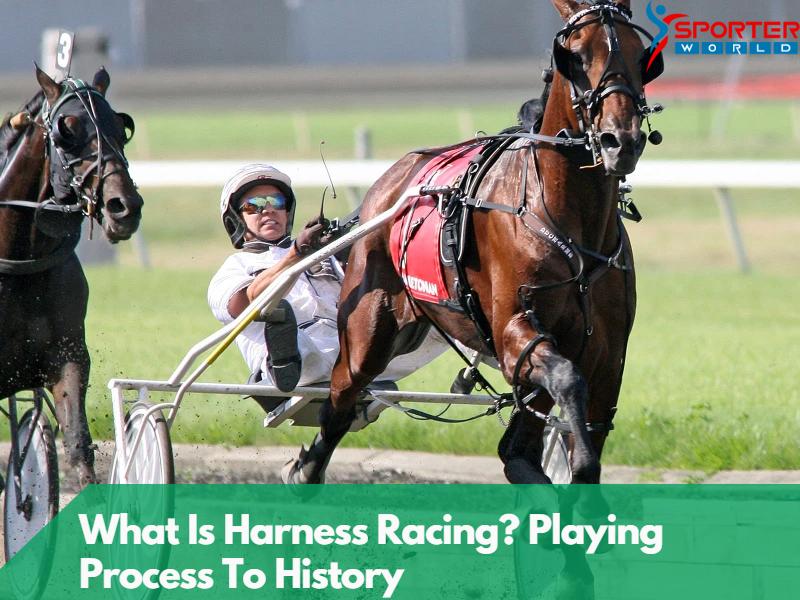
Frequently Asked Questions
How fast do harness racing horses typically run?
Harness racing horses can achieve impressive speeds. The average speed of a trotter or pacer in a race can range from 25 to 30 miles per hour (40 to 48 kilometers per hour). However, top horses in harness racing can reach speeds exceeding 35 miles per hour (56 kilometers per hour) during their fastest moments.
Are there specific age restrictions for harness racing horses?
Yes, there are age restrictions in harness racing. The most common age for horses to start racing is around two or three years old. Some jurisdictions have specific races designed for two-year-olds, while others focus on three-year-olds and older horses. Different age groups compete in separate races to ensure fair competition based on the horses’ maturity and experience.
How are harness racing horses trained to trot or pace?
Harness racing horses undergo specialized training to learn their respective gaits. Professional trainers gradually introduce young horses to harness equipment, teaching them to respond to commands and maintain their gait. Training involves exercises such as long trotting, jogging, and interval training. Over time, horses develop muscle strength and the ability to maintain their gait during races.
What are the differences between harness racing and thoroughbred racing?
While both harness racing and thoroughbred racing involve horses and racing, they differ in several aspects. Harness racing uses a trot or pace gait with horses pulling a two-wheeled cart, while thoroughbred racing involves galloping with jockeys on the horse’s back. Thoroughbred racing focuses on speed and agility, while harness racing emphasizes the horse’s ability to maintain a specific gait and pull the sulky efficiently.
Can anyone become involved in harness racing?
Yes, harness racing is open to participation from various individuals. You can become involved as an owner, trainer, driver, breeder, spectator, and enthusiast. Ownership or direct involvement in training and driving typically requires proper licensing and an understanding of the sport’s rules and regulations. Still, anyone can enjoy the excitement of watching harness racing at race tracks or through televised or online broadcasts.
Conclusion
Harness racing is not only a thrilling sport to watch but also has a rich history and cultural significance. From the majestic horses to the skilled drivers, there’s no denying the excitement and beauty of this sport. Whether you’re a seasoned fan or a newcomer, live harness racing is a chance, and you may find yourself hooked for life.
